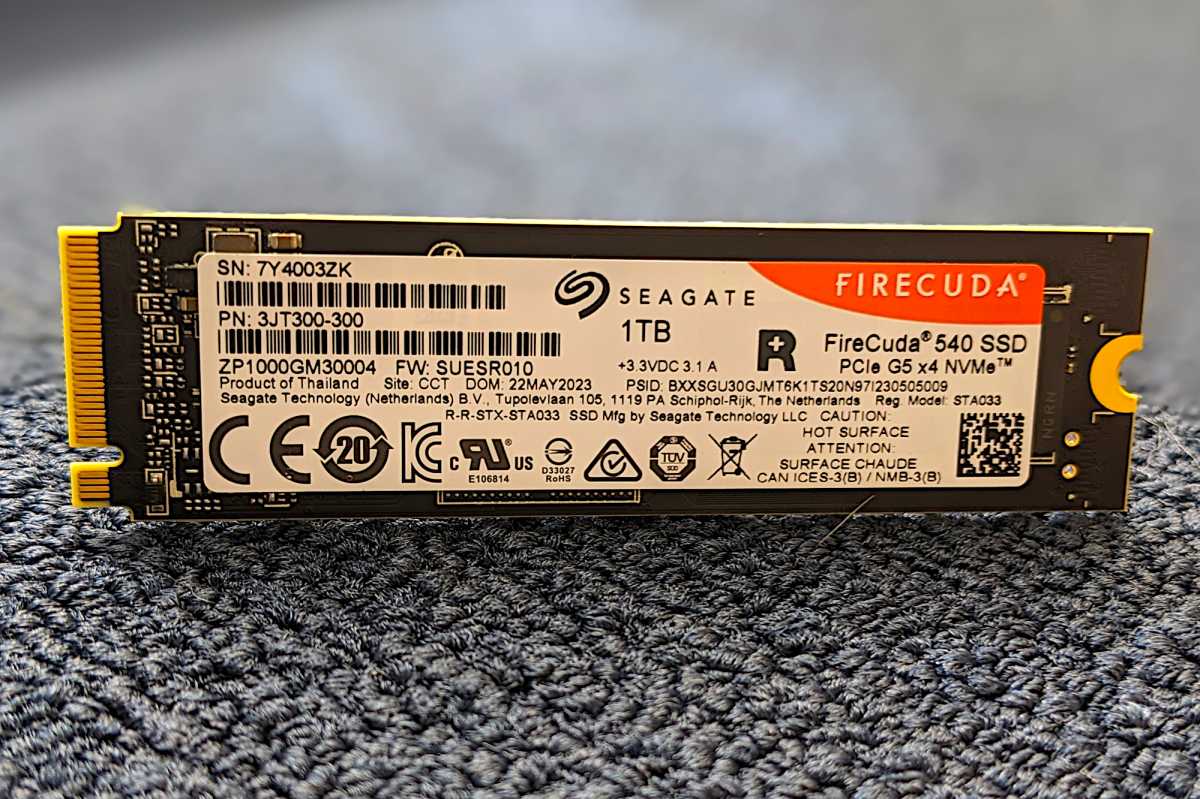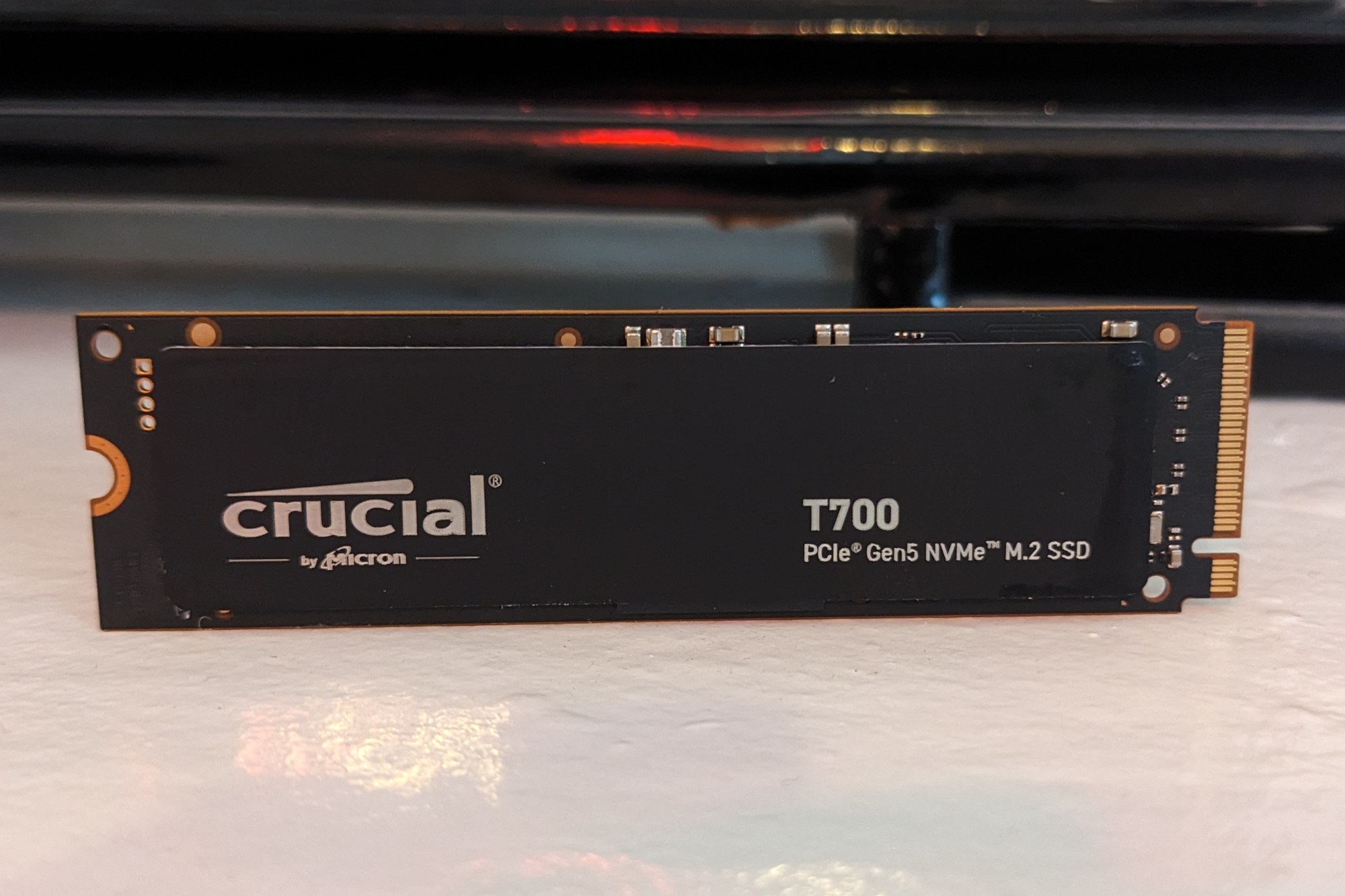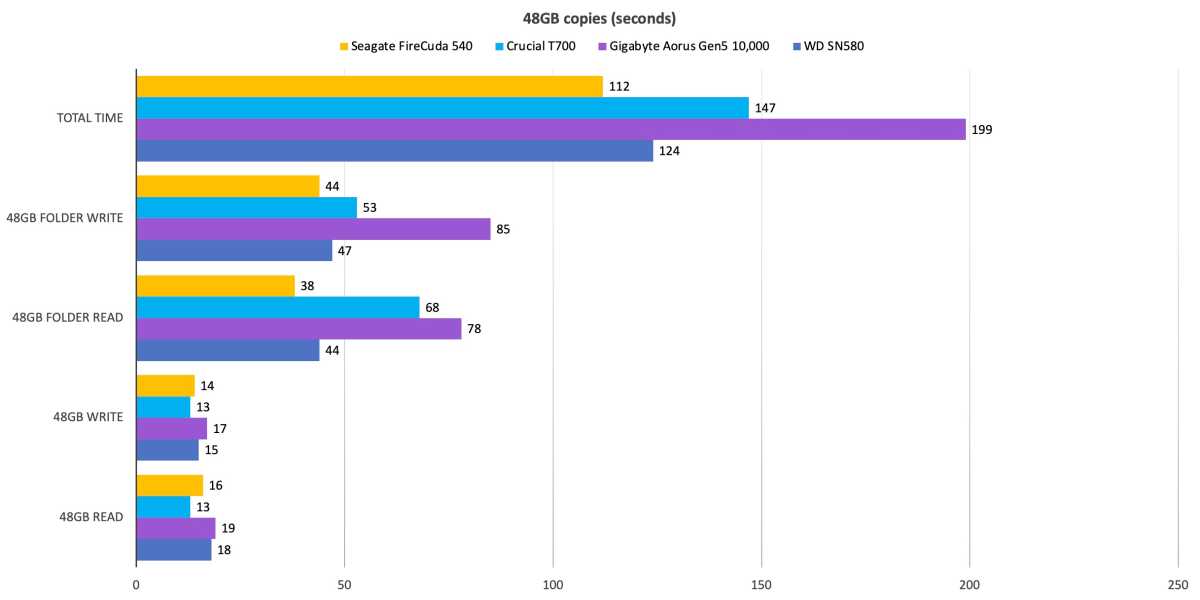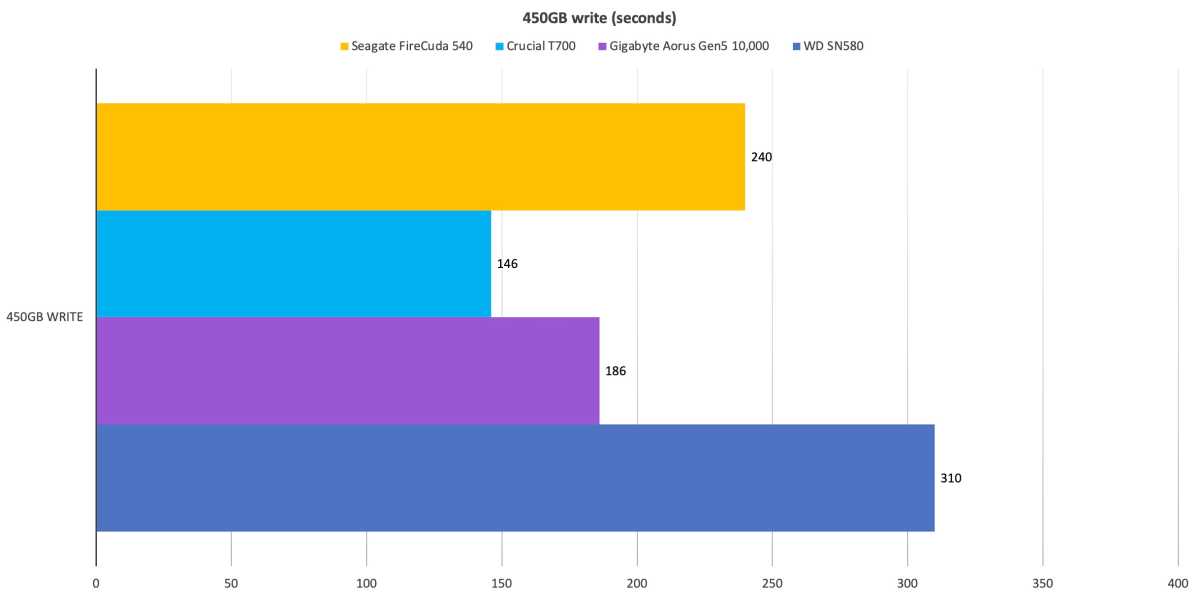Expert's Rating
Pros
- Excellent performer
- Slightly cheaper than the PCIe 5.0 competition
- Excellent TBW rating and warranty
Cons
- Slightly slow at our 450GB write
Our Verdict
Though it’s not the fastest PCIe 5.0 SSD we’ve seen with synthetic benchmarks, Seagate’s FireCuda 540 blazed to a first-place finish in our real world 48GB transfers. That makes it a top choice.
Best Prices Today: Seagate FireCuda 540 NVMe SSD
You know the PCIe 5.0 NVMe market is picking up when venerable storage vendor Seagate enters the fray. The company’s new FireCuda 540 leverages the fifth-gen bus to turn in outstanding real-world performance.
It wasn’t quite the measure of the Crucial T700 in other tests, but it was close and is also a bit more affordable.
Further reading: See our roundup of the best SSDs to learn about competing products.
Seagate FireCuda 540 specs and design
The 540 is a 2280 (22mm wide, 80mm long) M.2 type utilizing four lanes of PCIe 5.0 for transfers. The NAND is Micron’s B58R 232-layer TLC, and the controller is Phison’s PS5026-E26. It’s double-sided, but still thin enough to upgrade most laptops.
The 540 is currently available in 1TB/$189.99 and 2TB/$319.99 flavors, putting it at the high end of the market, albeit a tad cheaper than Crucial’s top-rated T700 in a 2TB capacity. Note that some of the prices on Amazon at the time of this writing were ridiculously higher than that, so….
Fair warning. Before official pricing is announced, some unscrupulous online vendors charge far more than retail to take advantage of the over-anxious. Hold onto your horses and wait for real pricing from the vendor to show up before you buy any computer component.

Jon L. Jacobi
Seagate warranties the drive for five years and at 1TBW (terabytes written to the drive) for every terabyte of capacity. That’s a very generous TBW rating, and the company also provides data rescue for three years should something monstrously evil befall the drive. Note that SSDs are now so reliable, we’ve almost forgotten what failure is like.
Our favorite PCIe 5.0 SSD
Crucial T700 PCIe 5.0 NVMe SSD

How does the Seagate FireCuda 540 perform?
The 540’s performance was one of the best we’ve seen, but a mixed bag with extreme highlights and a couple of “low” points. The good news is that the drive set a record in our 48GB transfers, blasting its way past the previous record holder—the PCIe 4.0, host memory bus WD SN580. It also easily bested both of the PCIe 5.0 SSDs we’ve tested: the Gigabyte Aorus Gen5 10,000 and aforementioned Crucial T700.
The WD SN580 is included in these charts because of its stellar 48GB transfer performance, and the fact that it’s about a third the cost of the others.

Though the Seagate FireCuda 540 was well behind the T700 in CrystalDisMark 8, it was competitive with the Gigabyte.
Jon L. Jacobi
The “low” points were that FireCuda 540 lost to both PCIe 5.0 competitors by a hair in the synthetic benchmarks (CrystalDiskMark 8 and AS SSD 2.0) and lagged considerably behind them in the 450GB write. Of course, those fifth-gen competitors were both 2TB drives, while Seagate sent us the 1TB version of the 540. That means less secondary cache and slower times in that test.
Seagate provides a very generous TBW rating, and also provides data rescue for three years should something monstrously evil befall the drive.

The Seagate FireCuda 540 trounced the competition in our 48GB transfers.
Jon L. Jacobi
The FireCuda also behaved a bit oddly during the 450GB write. Normally, we see the top speed sustained until the secondary cache runs out, then a drop to the NAND’s native write speed (usually 250Mbps to 450Mbps). The 540 on the other hand started out at top speed (over 3GBps), then about a quarter of the way in dropped to around 1.7GBps and stayed there until the write was completed.
The overall time was acceptable in the grand scheme, but not on par for fifth-gen, with the aforementioned caveat concerning capacity.

The Seagate FireCuda 540 didn’t fare particularly well in the 450GB write. That’s at least partially because it’s a 1TB drive while the other two PCIe 5.0 drives were 2TB with more secondary cache.
Jon L. Jacobi
The only other facet of the FireCuda 540’s performance worth mentioning is that it was just a bit slow formatting. As you’ll likely only do this once (we reformat continually during testing), that’s not something you should ever worry about.
A PCIe 4.0 Alternative
WD Blue SN580
Autentifică-te pentru a adăuga comentarii
Alte posturi din acest grup

Microsoft recently released a series of important security fixes for

We’ve come a long way from the beige PCs of the 1990s. But even thoug

Graphics card prices are dropping. Wow, that’s something I haven’t be

It was a good ride while it lasted, those who’ve been paying less for


If you have a slow main drive and you’re looking to finally superchar

It’s hard to find a good deal for a gaming monitor, even if you’re no


